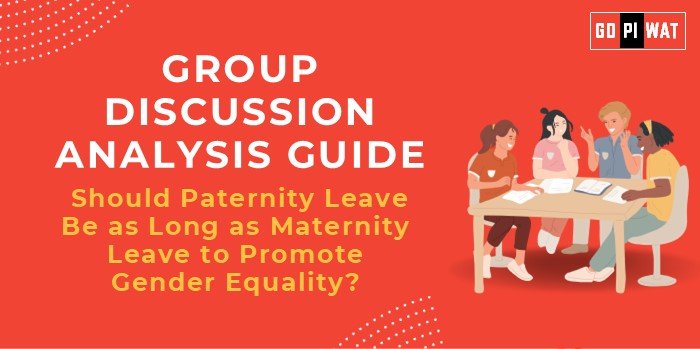📋 Should Paternity Leave Be as Long as Maternity Leave to Promote Gender Equality?
🌐 Introduction to the Topic
Opening Context: “Paternity leave as a cornerstone of gender equality is gaining momentum worldwide. From Nordic countries leading the charge to emerging debates in India, the issue raises questions about societal norms and economic structures.”
Topic Background: Globally, the advocacy for paternity leave stems from the need to balance gender roles and enhance family well-being. While maternity leave has long been recognized, the focus on paternity leave reflects changing perceptions about fatherhood and equality. Countries like Sweden offer 90 days of mandatory paternity leave, yet many nations, including India, lag behind.
📊 Quick Facts and Key Statistics
- 🇮🇳 India’s Paternity Leave Policy: Currently no statutory provision, although some private firms offer up to 2 weeks.
- 🌍 Global Benchmark: Iceland and Norway offer equal parental leave of over 90 days per parent.
- 📉 Labor Participation Gap: Only 22.8% of Indian women participate in the workforce (World Bank, 2023).
- 👶 Parental Leave Uptake: In Japan, only 7% of fathers utilized paternity leave in 2021, reflecting societal barriers.
👥 Stakeholders and Their Roles
- 🏛️ Government: Legislation and funding for leave policies.
- 🏢 Corporates: Offering and normalizing paternity leave in workplaces.
- 👨👩👧👦 Families: Encouraging equitable caregiving.
- 🌍 Global Organizations: Advocacy and setting benchmarks (e.g., UNICEF, ILO).
📚 Achievements and Challenges
Achievements:
- 🌟 Cultural Shifts: Nordic countries showcase equitable parenting benefits for family well-being.
- 💼 Corporate Leadership: Firms like Microsoft and Netflix offer extended paternity leave.
- 📚 Improved Outcomes: Children with involved fathers perform better academically and socially.
Challenges:
- 💰 Economic Strain: High costs for small and medium enterprises.
- 🌍 Cultural Barriers: Traditional gender norms in countries like India deter uptake.
- 📊 Global Disparity: Unequal adoption of policies across nations.
Global Comparisons:
- 🇸🇪 Sweden: 480 days shared leave with incentives for fathers to participate.
- 🇮🇳 India: Policy limited to private sector initiatives, highlighting disparities.
Case Study:
- 🎥 Netflix: Provides up to 52 weeks of paid parental leave, resulting in higher employee retention rates.
🗨️ Structured Arguments for Discussion
- ✅ Supporting Stance: “Paternity leave fosters gender equality by normalizing shared parenting responsibilities.”
- ❌ Opposing Stance: “Economic constraints and workforce disruptions make lengthy paternity leave impractical.”
- ⚖️ Balanced Perspective: “While promoting equality, implementation should consider economic feasibility and cultural adaptation.”
🌟 Effective Discussion Approaches
- 💡 Opening Approaches:
- 📘 Use global examples like Sweden to emphasize feasibility.
- 👶 Highlight the societal benefits of shared caregiving.
- 💬 Counter-Argument Handling:
- “Rebut cultural objections by showing success in similar economies.”
- “Address cost concerns by citing increased employee satisfaction and productivity.”
📈 Strategic Analysis: SWOT
- ✅ Strengths: Reduces gender bias, promotes family bonding.
- ⚠️ Weaknesses: High economic burden for firms.
- 🌟 Opportunities: Aligns with global equality trends.
- ⚡ Threats: Resistance due to societal norms.
🎓 Connecting with B-School Applications
- 🌍 Real-World Applications: HR policy-making, diversity and inclusion strategies, business sustainability.
- 💬 Sample Questions:
- “How can businesses implement paternity leave without compromising productivity?”
- “What role does paternity leave play in improving gender diversity at work?”
- 📘 Insights for Students:
- Explore intersectionality in equality, workforce policies, and leadership roles.


